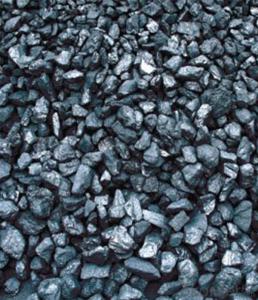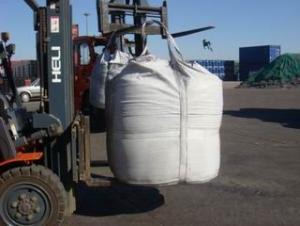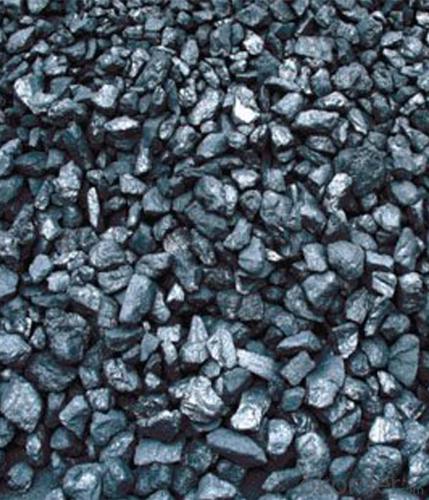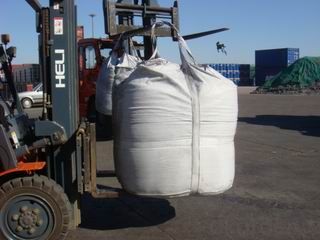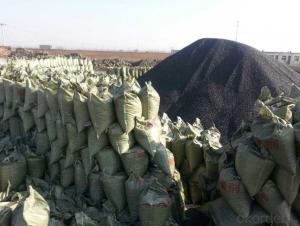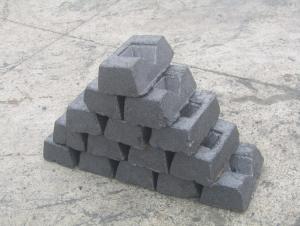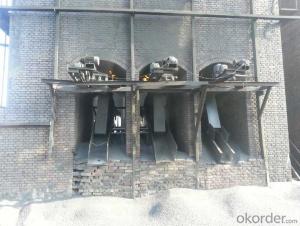FC 94 Percent Calcined Anthracite With High Quality
- Loading Port:
- China main port
- Payment Terms:
- TT or LC
- Min Order Qty:
- 30 m.t.
- Supply Capability:
- 10000 m.t./month
OKorder Service Pledge
OKorder Financial Service
You Might Also Like
Specifications
Calcined Anthracite
Fixed carbon: 90%-95%
S: 0.5% max
Size: 0-3. 3-5.3-15 or as request
Calcined Anthracite is produced using the best Anthracite-Taixi Anthracite with low S and P, It is widely used in steel making and casting, Chemical and some other fields.
General Specification of Calcined Anthracite:
PARAMETER UNIT GUARANTEE VALUE | |||||
F.C.% | 95MIN | 94MIN | 93MIN | 92MIN | 90MIN |
ASH % | 4MAX | 5MAX | 6MAX | 7MAX | 8MAX |
V.M.% | 1 MAX | 1MAX | 1.5MAX | 1.5MAX | 1.5MAX |
SULFUR % | 0.5MAX | 0.5MAX | 0.5MAX | 0.5MAX | 0.5MAX |
MOISTURE % | 0.5MAX | 0.5MAX | 0.5MAX | 0.5MAX | 0.5MAX |
Size can be adjusted based on buyer's request.
Pictures of Calcined Anthracite:
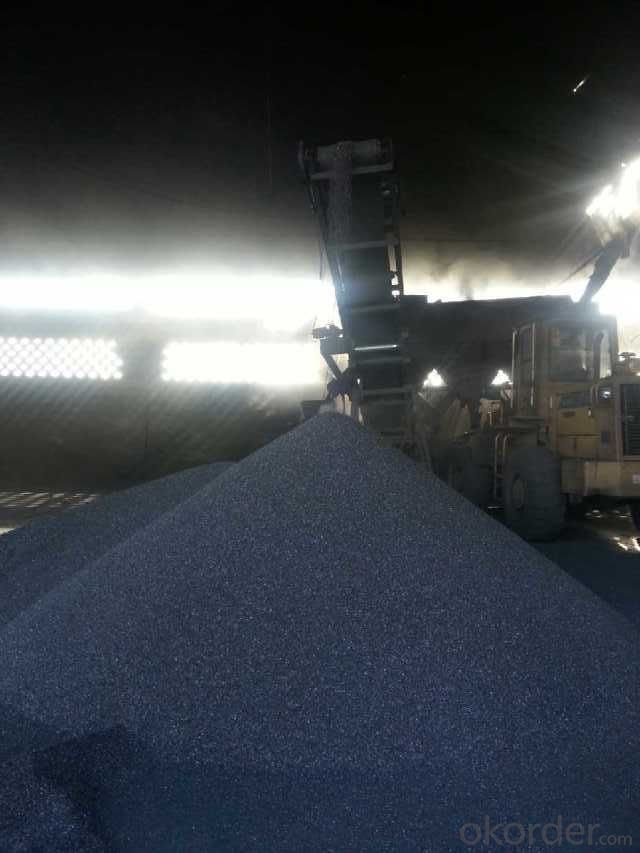
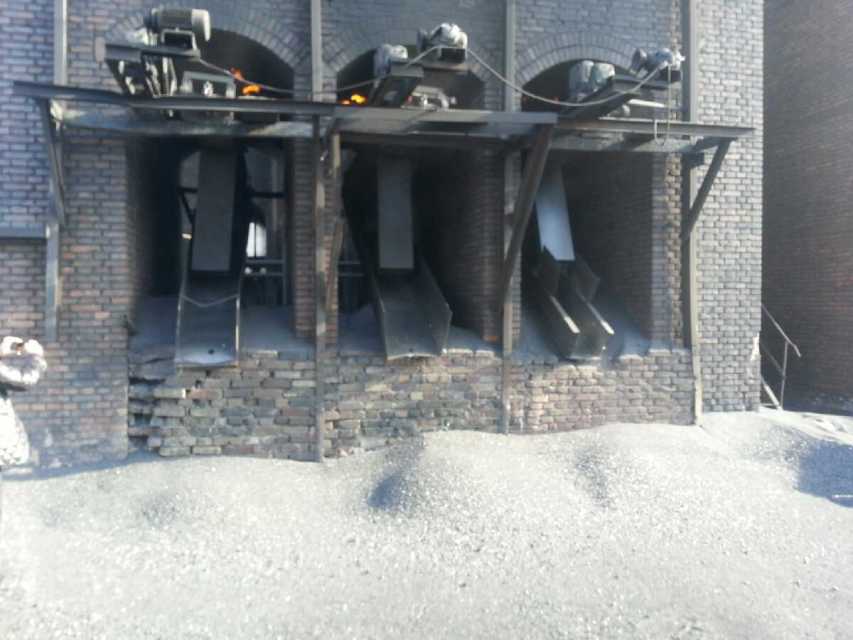
We can supply below furnace charges, please feel free to contact us if you areinterested in any of any of them:
Coke (Metallurgical, foundry, gas)
Calcined Anthracite with fixed carbon from 90% to 95%
Our Service:
1. Your inquiry related to our products or prices will be replied in 24hours.
2. Manufacturer with large capacity, ensure the fast production cycle after confirmed the order.
3. Our professional technicians will answer your entire enquiry in patient.
4. To meet the refractory solutions, we can serve as your instructions.
5. Protection of sales area and private information for our entire customer.
- Q: How is carbon used in the production of filters?
- Carbon is commonly used in the production of filters due to its unique properties. One of the main uses of carbon in filters is its ability to adsorb, or attract and hold onto, impurities and contaminants. This is because carbon has a large surface area with many tiny pores, allowing it to effectively trap and remove particles, chemicals, and odors from air, water, and other substances. In air filters, carbon is often combined with other materials, such as activated charcoal, to create activated carbon filters. These filters are used to remove pollutants, allergens, and odors from the air. The activated carbon adsorbs the contaminants, trapping them within its porous structure and improving the overall air quality. In water filters, carbon can be used in different forms, such as granular activated carbon (GAC) or carbon block filters. GAC filters are commonly used in household water filtration systems and are effective in removing chlorine, volatile organic compounds (VOCs), pesticides, and other chemicals. Carbon block filters, on the other hand, are made by compressing activated carbon into a solid block, providing a higher surface area and better filtration efficiency. In addition to air and water filters, carbon is also used in various other types of filters, such as those used in industrial processes, gas masks, and respirators. The versatility of carbon in filtering applications is due to its ability to adsorb a wide range of contaminants and its high adsorption capacity. Its use in filters helps improve the quality and safety of the substances being filtered, making it an essential material in many filtration processes.
- Q: What are the consequences of increased carbon emissions on vulnerable communities?
- Increased carbon emissions have severe consequences on vulnerable communities. These communities, often located in low-income areas or developing countries, bear the brunt of climate change impacts such as extreme weather events, rising sea levels, and reduced access to resources like clean water and food. These consequences exacerbate existing social and economic inequalities, leading to displacement, loss of livelihoods, increased health risks, and even conflicts over scarce resources. It is crucial to address carbon emissions and support these communities to build resilience and adapt to the changing climate.
- Q: Speak in detail! I am ~ carbon Roast Lamb Leg lamb chops lamb barbecue ah ~ ~ how to do with practice video line! And how do you bake the oven?
- Step 2: prepare garlic paste, starch paste, mixed evenly, with the barbecue. The purpose is to make the lamb roast outside tender, and not paste, garlic flavor rich, delicious, very delicious, this is a unique secret recipe, dedication. Step 3: students after adding charcoal, grill, the best 30 cm distance between the grill with charcoal, around to gather, the formation of hot absolute direction, to avoid heat loss. Lamb must be able to rack up and down around the inversion freely, to evenly bake. Bake for 7 minutes until the lamb cooked, mashed garlic paste to wipe, scorched yellow Maoyou creaking, sprinkle with pepper and natural. Time to master almost on the line. Because mutton has the distinction between the old lamb and the lamb, it is difficult to grasp the baking time. If you use a home electric oven, you'll need to marinate the mutton first. Methods: fresh meat (lean half) dice, into the pot, cumin, pepper, fennel, two, ginger,
- Q: I want to know why the ATP in the five carbon sugar is a DNA RNA??
- An adenosine ribose adenine nucleoside by connection formation.If it is deoxyribonucleic acid, it is called three phosphate adenine nucleoside, or dATP
- Q: How does carbon affect the pH of rainwater?
- Carbon dioxide (CO2) in the atmosphere can dissolve in rainwater to form carbonic acid (H2CO3), which lowers the pH of rainwater, making it more acidic.
- Q: What is carbon footprint labeling?
- Carbon footprint labeling is a system that provides information about the amount of greenhouse gas emissions produced during the manufacturing, transportation, and use of a product. It aims to inform consumers about the environmental impact of their purchases, allowing them to make more sustainable choices and reduce their carbon footprint.
- Q: How is activated carbon produced?
- Activated carbon is produced through a process called activation, which involves heating carbon-rich materials, such as wood, coal, or coconut shells, at high temperatures in the absence of oxygen. There are two main methods of activation: physical activation and chemical activation. In physical activation, the carbon-rich material is first carbonized by heating it to a high temperature. This creates a carbonized char with a high carbon content. The char is then treated with an oxidizing gas, such as steam or carbon dioxide, at temperatures between 600 to 900 degrees Celsius. This causes the char to expand and develop a highly porous structure. The resulting material is then washed and dried to remove any impurities, resulting in activated carbon. Chemical activation, on the other hand, involves impregnating the carbon-rich material with a chemical activating agent, such as phosphoric acid, zinc chloride, or potassium hydroxide. The impregnated material is then heated to temperatures ranging from 400 to 800 degrees Celsius. This process chemically reacts with the carbon, creating a highly porous structure. The activated carbon is then washed and dried to remove any residual chemicals. Both physical and chemical activation methods result in the production of activated carbon with a large surface area and a network of pores. These pores enhance the adsorption capacity of the activated carbon, allowing it to effectively trap and remove impurities, contaminants, and pollutants from gases and liquids.
- Q: How does carbon impact the formation of smog?
- Carbon plays a significant role in the formation of smog as it is one of the main contributors to the formation of ground-level ozone. When carbon-based pollutants, such as vehicle exhaust and industrial emissions, react with sunlight and other pollutants in the atmosphere, they undergo a complex chemical reaction leading to the production of smog. This smog not only poses health risks to humans but also harms the environment by contributing to climate change and damaging ecosystems.
- Q: How does carbon affect the formation of toxic algal blooms?
- Carbon can have both direct and indirect effects on the formation of toxic algal blooms. One direct effect is through the process of eutrophication. Carbon, in the form of organic matter, enters water bodies through runoff from agricultural activities, sewage discharge, and other human activities. This excess carbon acts as a nutrient for algae, promoting their growth and proliferation. When the carbon supply is abundant, algae can reproduce rapidly, leading to the formation of algal blooms. The presence of carbon also affects the composition of algal communities. Some species of algae, known as harmful algal blooms (HABs), have the ability to produce toxins. These toxins can be harmful to aquatic organisms, as well as humans and animals that come into contact with the water. Carbon concentrations can influence the growth and dominance of HABs, creating favorable conditions for their development. Furthermore, carbon affects the chemistry of the water, including its pH levels. Changes in pH can have a significant impact on the physiology and behavior of algae. Some species of toxic algae are more tolerant of low pH levels, which can be exacerbated by increased carbon dioxide levels in the water. This can create an environment that favors the growth of harmful algal blooms. Indirectly, carbon can also alter the temperature and nutrient dynamics in water bodies. Climate change, driven by increased carbon emissions, can lead to warmer temperatures, which can stimulate algal growth. Additionally, changes in nutrient availability due to carbon-induced alterations in the water cycle can favor the development of toxic algal blooms. In summary, carbon affects the formation of toxic algal blooms through eutrophication, changes in algal community composition, alterations in water chemistry, and indirect impacts on temperature and nutrient dynamics. Understanding these relationships is crucial for developing strategies to mitigate the occurrence and impact of harmful algal blooms.
- Q: What is carbon nanophotonics?
- The study and manipulation of light at the nanoscale using carbon-based materials is known as carbon nanophotonics. This branch of science and technology integrates carbon nanotubes, graphene, and diamond nanoparticles with photonics to develop new optical devices and systems. Carbon-based nanomaterials possess exceptional electrical conductivity, high mechanical strength, and excellent optical properties, making them ideal for nanophotonics applications. These materials can confine and manipulate light at the nanoscale, enabling the miniaturization of optical components and enhancing light-matter interactions. Carbon nanophotonics has vast potential across various fields. Telecommunications, for instance, can benefit from high-speed and compact photonic devices developed using carbon nanomaterials for efficient data transmission. In the field of sensing, highly sensitive and selective sensors can be developed using carbon nanophotonics to detect different molecules and substances. Furthermore, carbon nanomaterials can enhance the efficiency of solar cells and other photovoltaic devices, contributing to advancements in energy harvesting. In summary, carbon nanophotonics is a rapidly evolving field that combines carbon-based nanomaterials with photonics to create innovative optical technologies. By harnessing the power of light at the nanoscale, this field has the potential to revolutionize industries and drive advancements in science and technology.
Send your message to us
FC 94 Percent Calcined Anthracite With High Quality
- Loading Port:
- China main port
- Payment Terms:
- TT or LC
- Min Order Qty:
- 30 m.t.
- Supply Capability:
- 10000 m.t./month
OKorder Service Pledge
OKorder Financial Service
Similar products
Hot products
Hot Searches
